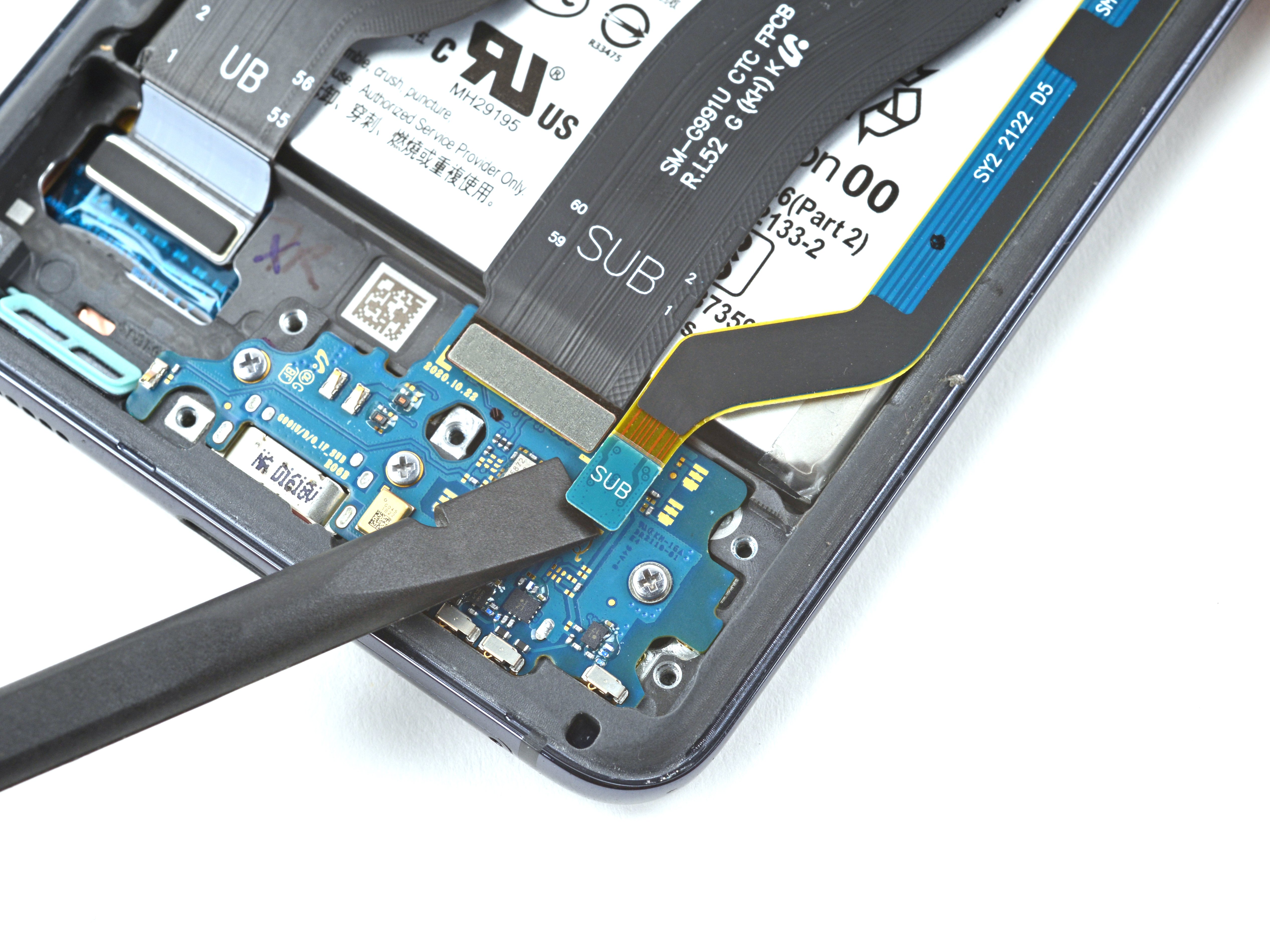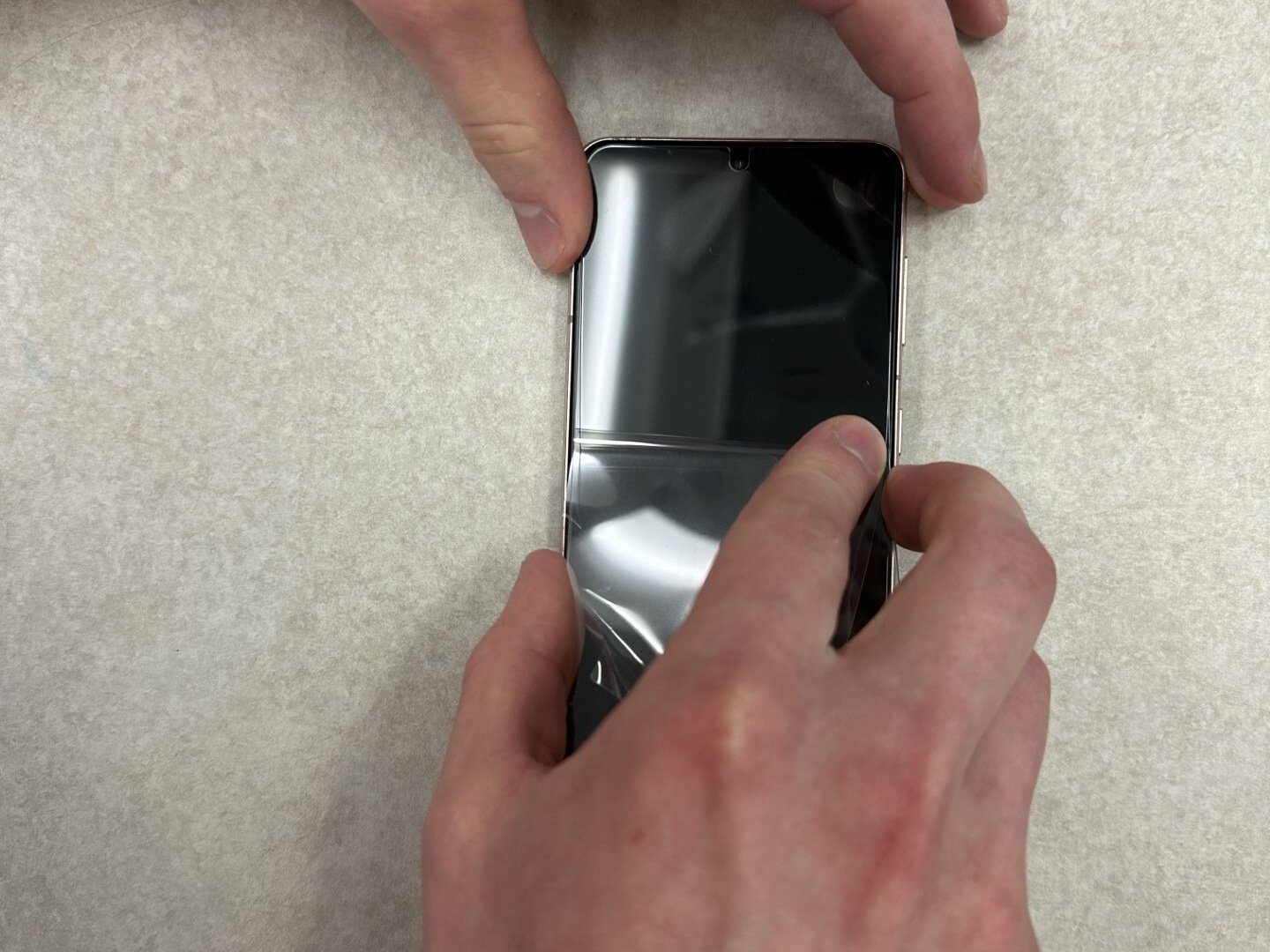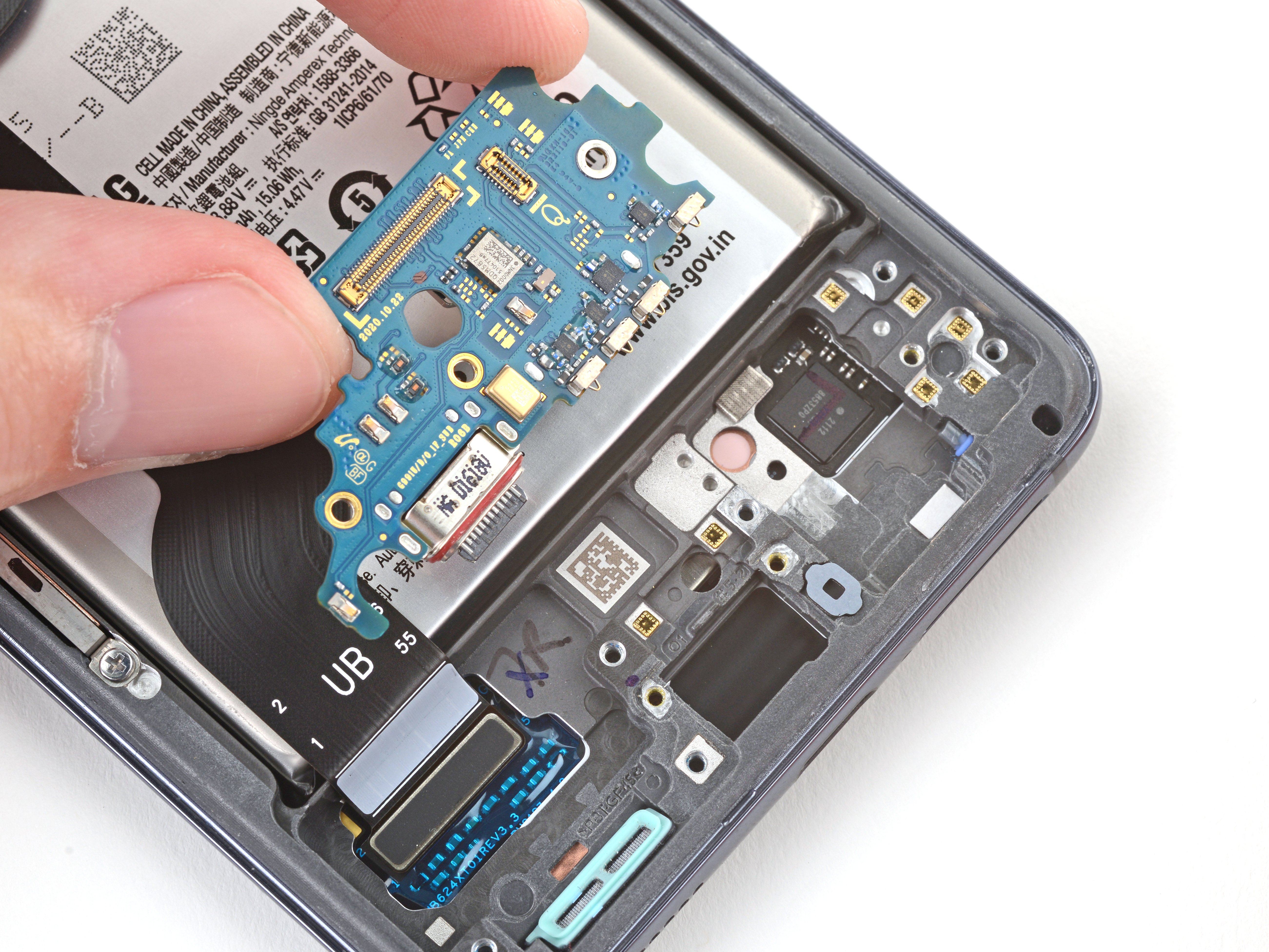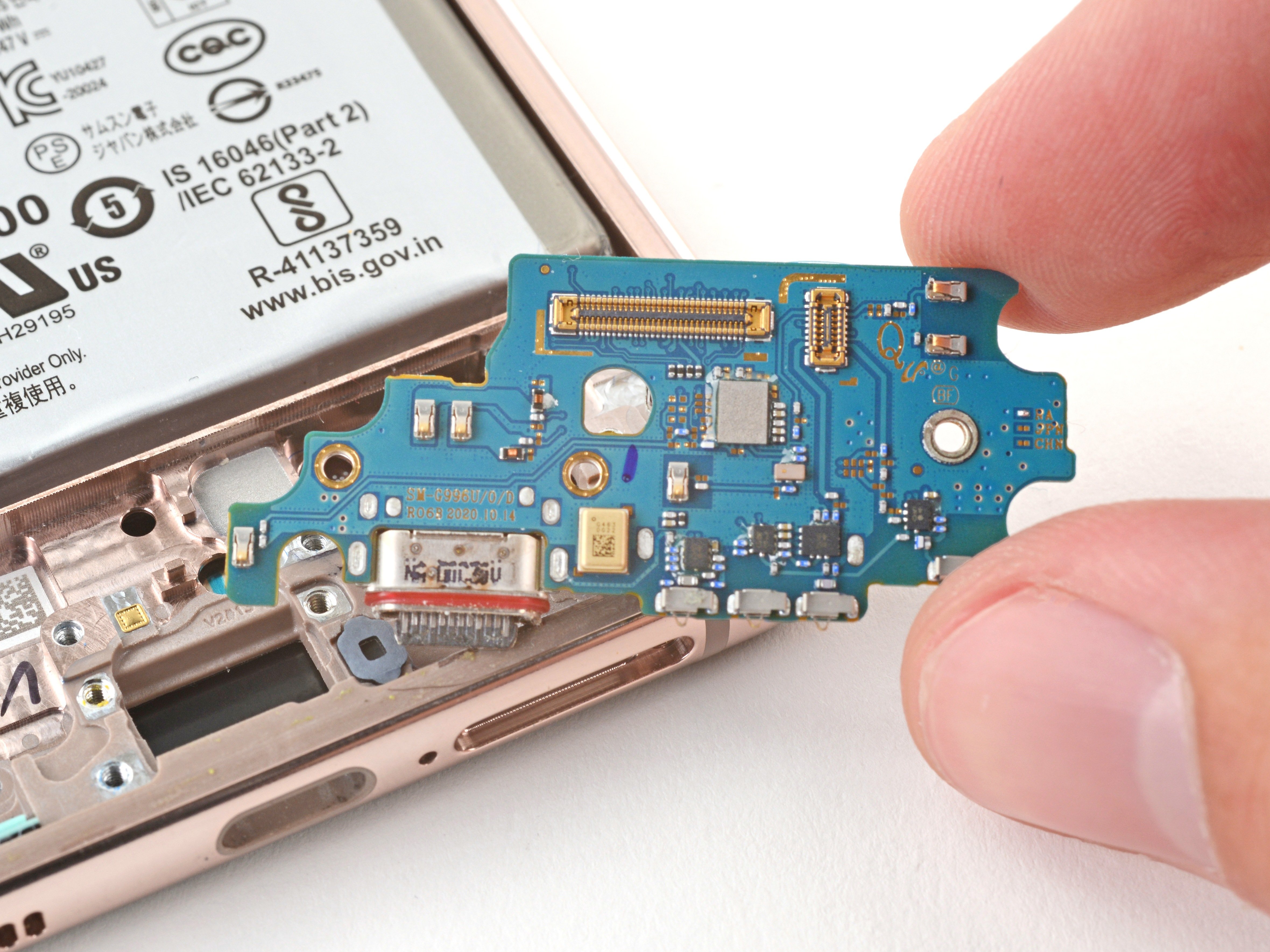DIY iPad GSM Home Button Assembly Replacement Guide
Duration: 45 minutes
Steps: 37 Steps
Time to swap out that home button assembly! Just a heads-up, some of the images in this guide were taken using a Wi-Fi model, so the insides might look a tad different from the cellular version. But don’t worry, the steps are pretty much the same for both models, unless we say otherwise. If you need help, you can always schedule a repair.
Step 1
Before diving into the repair, we suggest giving your microwave a quick clean. Any sticky residue on the bottom could end up making a mess on your iOpener. Trust us, it’s worth the effort!
– Pop that iOpener right in the center of the microwave and let it warm up!
Tools Used
Step 2
Keep an eye on that iOpener during your repair adventure! Too much heat can lead to a dramatic burst. Remember, no heating over 100˚C (212˚F) – we want a smooth operation, not a fireworks show!
If your iOpener looks like it’s puffing up, give it some space. Safety first, my friend!
If the middle of the iOpener is still too toasty to handle, just hang tight! Let it cool down a bit before giving it another go. A well-heated iOpener should stay cozy for about 10 minutes. You’re doing great!
– Give that iOpener a warm hug in the microwave for thirty seconds.
– As you tackle the repair, keep an eye on your iOpener; when it starts to cool down, pop it back in the microwave for another thirty seconds to keep the good vibes going.
Tools Used
Step 3
The iOpener gets pretty toasty, so handle with care! An oven mitt could be your best buddy here.
– Carefully take the iOpener out of the microwave, gripping one of the flat ends to steer clear of the sizzling center.
Tools Used
Step 4
If you’re short on microwave magic, no worries! Just pop your iOpener in some boiling water to get it nice and toasty.
– Grab a pot or pan and fill it up with enough water to completely dunk your iOpener.
– Bring that water to a rolling boil and then turn off the heat—time to get toasty!
– Now, gently place your iOpener into the warm bath for about 2-3 minutes. Make sure it’s soaking in all that goodness.
– Using tongs (safety first!), lift the warm iOpener out of the water.
– Give it a good drying off with a towel. No one likes a soggy iOpener!
– And there you have it! Your iOpener is all set for action! If it needs a little extra warmth, just repeat the steps: boil the water, turn off the heat, and let it soak again for 2-3 minutes. Easy peasy!
Tools Used
Step 5
Put on those safety glasses to keep your peepers safe, and remember to treat that LCD screen like a delicate flower—handle with care!
– Got a cracked display glass? No worries! To keep the mess contained and avoid any ouchies during your repair, grab some tape and cover that glass up.
– Start laying down some clear packing tape in overlapping strips over your iPad’s screen until it’s completely shielded.
– Now, just follow the rest of the guide as best as you can. Keep in mind, once the glass starts to break, it might continue to crack a bit while you’re working. You might find a metal prying tool handy for scooping out those pesky glass shards.
Step 6
Hey there! Just a friendly reminder that you’ll be handling some fragile glass during this process. To keep your eyes safe from any pesky flying shards, we highly recommend rocking a pair of safety glasses. Better safe than sorry, right?
– Place the iOpener snugly on the right edge of your iPad, making sure it sits nice and flat for a solid connection.
– Give it about 90 seconds to warm things up before you dive in and start prying open that front panel!
Tools Used
Step 7
Getting that wedged tip of the opening tool in between the glass and plastic might take a bit of muscle. Just take your time, and give it a gentle wiggle back and forth as needed. You’ve got this!
– Look closely and you’ll spot a tiny gap in the adhesive ring at the upper right corner of your iPad—about 2.0 inches (or roughly 5 cm) from the top. Let’s take advantage of this little flaw!
– Now, position your tool near the mute button. Gently slide the tip of a plastic opening tool into that gap between the front glass and the plastic bezel. Just nudge the very tip in, enough to create a bit of space.
Step 9
– With the plastic opening tool firmly in place between the front glass and the plastic bezel, gently slide a plastic opening pick into that little gap right next to the tool. You’re doing great!
Step 10
– Take out the plastic opening tool from your iPad, and gently slide the opening pick a little deeper under the front glass—aim for about 0.5 inches. You’ve got this!
Step 12
The adhesive is super strong, so you might need to put in some elbow grease. Just take your time and be gentle.
If you can spot the tip of the opening pick peeking under the front glass, gently pull it out a smidge. While using the pick this deep won’t cause any harm, it might leave some adhesive residue on the LCD. Just a little heads up!
– While the iOpener is warming up the bottom edge, start peeling back the adhesive along the right edge of the iPad.
– Gently slide the opening pick down the edge of the iPad, freeing the adhesive as you move along.
Tools Used
Step 13
As you peel away the adhesive, you might want to nudge that heated iOpener back onto the right edge of your iPad. How long you let your iPad cool down while you were working will influence this step. Keep it cozy!
– If your trusty opening pick is having a tough time with the adhesive, just give it a little ‘roll’ along the side of the iPad to keep that sticky stuff at bay.
Tools Used
Step 14
– Before you pop that first opening pick into the bottom corner of your iPad, slide a second pick right under the edge of the front glass. This little buddy will help keep the adhesive from getting too cozy again!
– Give your iOpener a little reheat love, and then place it at the top edge of the iPad. You’re doing great!
Tools Used
Step 15
The Wi-Fi antenna is snugly attached to the bottom right edge of the iPad’s rear case with screws and a cable. Given the delicate positioning of the Wi-Fi antenna, it’s super important to take your time and be careful—otherwise, you might accidentally cause some serious damage to the antenna.
– Alright, folks, it’s time to tread carefully for the next few steps.
– You’ll need to gently peel away the adhesive that’s holding the antenna to the front panel, but watch out! We don’t want to harm those fragile bits connecting the antenna to the bottom of the iPad. So, let’s take it slow and steady with the upcoming steps.
Step 16
Hey there! Just a friendly reminder: don’t slide that pick past the bottom right corner. It could lead to some unwanted damage to the Wi-Fi antenna. Let’s keep your device in tip-top shape!
– Gently glide the opening pick around the bottom right corner of your iPad to free up that pesky adhesive. You’re doing great!
Step 17
As you glide the opening pick along the bottom right edge of the front panel, keep in mind that the Wi-Fi antenna is just a hop, skip, and a jump away from the corner. Be careful not to cut it loose by releasing the adhesive the wrong way!
Just a little tip: don’t pull the pick all the way out from under the front glass. Instead, give it a gentle tug so that about 1/8″ (3 mm) of the tip stays snugly underneath. You’re doing great!
– Gently glide the tip of the opening pick along the bottom edge of the iPad to free the adhesive holding the Wi-Fi antenna in place. You’ve got this!
Step 18
– After you’ve gracefully navigated past the Wi-Fi antenna, which is about 3 inches (75 mm) from the right edge—right by the home button—it’s time to pop that opening pick back in all the way.
– Now, slide the pick to the right to let go of the adhesive that’s holding the Wi-Fi antenna snug against the front glass.
Step 19
Remember, keep the iOpener cozy—no more than a minute in the heat at a time! Give it a breather for at least two minutes before bringing the warmth back. You’re doing great!
If the adhesive has gotten a bit too chilly along the bottom edge, give the iOpener another warm-up to cozy up that sticky stuff where you’re working.
– Keep working that adhesive loose along the bottom of the iPad. Gently pull the opening pick out far enough to navigate around the home button, then slide it back in to about 1/2 inch (10 mm) once it’s past the home button. You’re doing great!
Tools Used
Step 20
– Keep peeling away that sticky stuff all along the bottom edge of the iPad, you got this!
– Once you’re in, leave the opening pick snugly under the front glass close to the home button. It’s like giving your iPad a little hug!
Step 22
If your adhesive has taken a bit too long to warm up, no worries! Just swap in a fresh iOpener along the top edge and keep at it. If your iOpener is feeling a bit chilly, give it a little heat boost and you’re good to go!
– Gently glide the opening pick along the top edge of your iPad, giving it a little tug to maneuver around the front-facing camera bracket.
– The adhesive here is no joke—it’s pretty thick! So take your time and apply some muscle, but be careful not to slip and hurt yourself or your iPad.
– If the opening pick feels like it’s getting stuck in the adhesive, try ‘rolling’ the pick as demonstrated in step 9.
Tools Used
Step 23
If the adhesive is feeling nice and toasty, go ahead and take that iOpener off the iPad for some extra ease. But if it’s still a bit clingy, just give the iOpener another quick heat-up and rest it on the left edge while you get to work. You’ve got this!
– Keep peeling away the adhesive at the top edge of the iPad, and gently maneuver the opening pick around the top left corner.
Tools Used
Step 24
The digitizer cable hangs out about 2″ (50 mm) from the bottom of your iPad. When you get to around 2.25″ (60 mm) from the bottom, it’s time to hit the brakes on that pick!
– Gently glide the opening pick down the left side of your iPad, letting it work its magic on the adhesive as you go. It’s nice and thin here thanks to the digitizer that runs the whole length. Just remember, keep that pick shallow—no deeper than 1/2 inch (10 mm)—to avoid any mishaps with the digitizer. You’ve got this!
Step 25
The digitizer cable is hanging out just about an inch (25 mm) from the bottom of the iPad. So, take your time and be gentle—let’s not accidentally cut this cable, okay?
– With the trusty opening pick still nestled under the bottom edge of your iPad, gently coax the adhesive loose from the bottom left corner. You’re doing great!
Step 26
– Grab one of those nifty opening picks and gently lift up the bottom right corner of your iPad. Then, give it a little tug with your fingers to help it along!
Step 27
Watch out for any leftover adhesive that might still be clinging on! Use an opening pick to gently slice through any sticky bits that are keeping the front panel in place.
– Gently hold your iPad by the top and bottom right corners and give the front glass a little twist away from the device. It’s like giving your iPad a friendly stretch!
– When you’re putting it all back together, grab a microfiber cloth and some compressed air to whisk away any dust or fingerprints on the LCD. We want that screen to shine bright before you seal it up!
Step 28
– Unscrew those four 2.0 mm Phillips screws that are holding the LCD snugly against the rear case. Let’s get that screen free!
Step 29
– Gently lift the LCD from the edge nearest to the volume buttons and swing it out from the rear case like a pro.
– Now, lay the LCD down on the front panel just like you see in the second picture. You’ve got this!
Step 30
Just a friendly reminder: make sure you’re lifting those hinged retaining flaps, not the sockets themselves!
The retaining flaps are marked in a vibrant red in the second picture.
– Gently use the edge of a plastic opening tool to lift up those little retaining flaps on the two digitizer ribbon cable ZIF sockets. You’re doing great!
Step 31
– Grab your trusty plastic opening tool and gently work the edge underneath the digitizer cable, coaxing it away from the shields on the logic board. You’re doing great!
– With a bit of finesse, carefully peel the digitizer cable off the adhesive that’s keeping it snug against the side of the rear case. You’re almost there!
Step 32
– Gently yank the digitizer ribbon cable straight out of its two cozy sockets on the logic board. You’ve got this!
Step 33
To get the front panel assembly off, you’ll need to gently slide the ribbon cable out from between the case and the LCD. A little nudge on the LCD might give you the extra space you need to make it happen.
– Gently lift the LCD from the long edge that’s furthest from the digitizer cable and smoothly flip it back toward the rear case—just like you’re closing a book with style.
– While keeping the LCD elevated, carefully slide the front panel away from the iPad. Watch out for that digitizer cable; we wouldn’t want it to get caught on the rear case or LCD.
Step 34
The home button assembly is glued to the front panel, and it can be a bit stubborn. To make things easier, we suggest using an iOpener to warm up that adhesive. You’ve got this!
– Pop that iOpener into the microwave and give it a warm hug for thirty seconds on high power. It’s time to get toasty!
– Now, gently place the warm iOpener right over the home button at the front edge of the display. Let’s get that button feeling cozy!
Tools Used
Step 35
– Slide the plastic opening tool under the right side of the home button assembly and gently lift it upwards to free the adhesive on that side. Remember, patience is key here!
Step 36
– Using the method we just talked about, gently peel back the adhesive on the left side of the home button.
– Carefully lift the home button mount away from the front panel.
Step 37
– Gently slide the edge of your trusty plastic opening tool underneath the home button mounting bracket.
– Carefully glide the tool along the retaining spring bracket to free that adhesive like a pro.
– Now, go ahead and lift the home button with its mounting bracket right off the front panel!



















































































